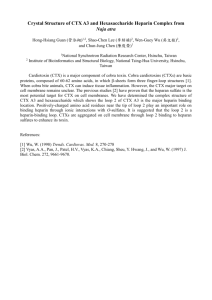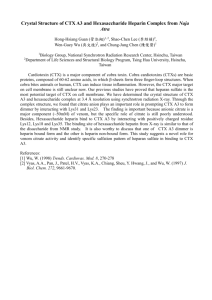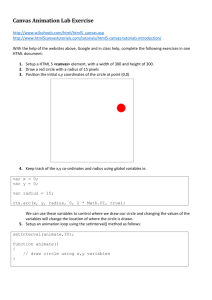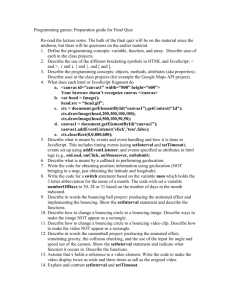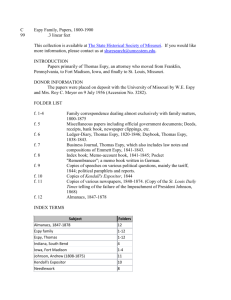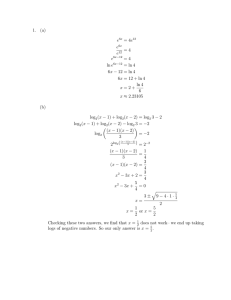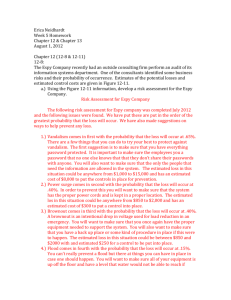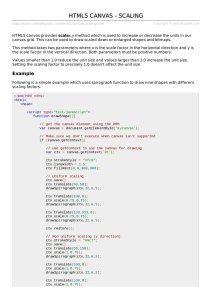Lab 3: Tree interpretation January 15, 2015
advertisement
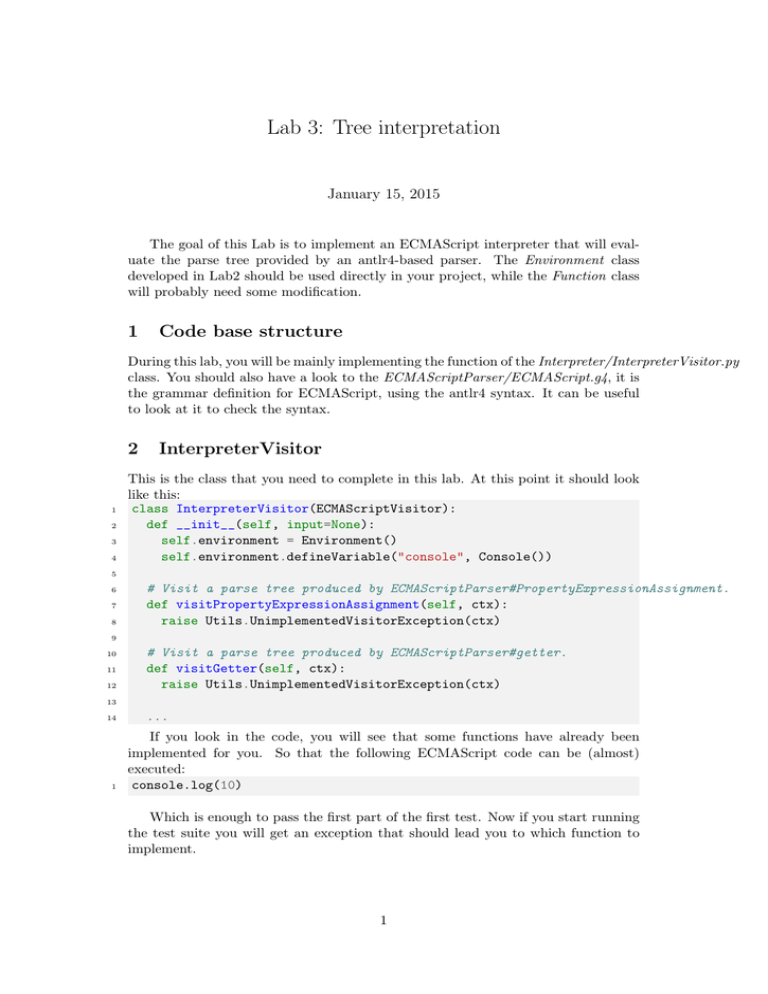
Lab 3: Tree interpretation
January 15, 2015
The goal of this Lab is to implement an ECMAScript interpreter that will evaluate the parse tree provided by an antlr4-based parser. The Environment class
developed in Lab2 should be used directly in your project, while the Function class
will probably need some modification.
1
Code base structure
During this lab, you will be mainly implementing the function of the Interpreter/InterpreterVisitor.py
class. You should also have a look to the ECMAScriptParser/ECMAScript.g4, it is
the grammar definition for ECMAScript, using the antlr4 syntax. It can be useful
to look at it to check the syntax.
2
1
2
3
4
InterpreterVisitor
This is the class that you need to complete in this lab. At this point it should look
like this:
class InterpreterVisitor(ECMAScriptVisitor):
def __init__(self, input=None):
self.environment = Environment()
self.environment.defineVariable("console", Console())
5
6
7
8
# Visit a parse tree produced by ECMAScriptParser#PropertyExpressionAssignment.
def visitPropertyExpressionAssignment(self, ctx):
raise Utils.UnimplementedVisitorException(ctx)
9
10
11
12
# Visit a parse tree produced by ECMAScriptParser#getter.
def visitGetter(self, ctx):
raise Utils.UnimplementedVisitorException(ctx)
13
14
1
...
If you look in the code, you will see that some functions have already been
implemented for you. So that the following ECMAScript code can be (almost)
executed:
console.log(10)
Which is enough to pass the first part of the first test. Now if you start running
the test suite you will get an exception that should lead you to which function to
implement.
1
3
Test suite
3.1
Test suite
You can find the test suite in /home/TDDA69/Labs/Lab3/Tests, each test case is
made out of two files, one ECMAScript file and one text file. The ECMAScript is
the code that need to be interpreted by your code and the text file is what should
be outputed on the command line.
There are currently eight categories of tests:
1. 01 literals: test for literal expression: float, booleans and string
2. 02 expressions: tests for expression (addition, multiplication, logical...)
3. 03 variables: tests for the creation and accessing variables
4. 04 statements: tests for statements (if, loops...)
5. 05 arrays: tests for arrays
6. 06 functions: tests for creating and calling functions and lambdas
7. 07 normal order : test for the normal order
8. 08 objects: tests for creating objects and associating properties
Most of those tests also include subtest.
3.2
Testing your interpreter
1
We provide a utility called espytester.py that can be run in the following way:
tdda69_lab3_tests dir_to_espy
1
Where dir to espy is the directory where you have put your code. So if you have
followed the course instructions, it should be in $HOME/espy and the following
command will run the test suite:
tdda69_lab3_tests $HOME/espy
1
Since running the full test suite can take a bit of time, you can run a single test
with the following command:
tdda69_lab3_tests dir_to_espy [testname]
1
For instance:
tdda69_lab3_tests dir_to_espy 02_expressions/01_addition
4
Parse tree Context
If you look at the skeleton of the visitor, all functions takes a ctx argument, those
classes are defined in espy/ECMAScriptParser/ECMAScriptParser.py, they all inherits from the class ParserRuleContext which is defined in the file espy/antlr4/ParserRuleContext.py.
The most important member variable of a ctx is the children (ctx.children), as
the name implies, it contains the list of children in the parse tree of the context
ctx. And the most important member function is the accept function which allow
to evaluate the context.
There are two types of children:
2
• antlr4.tree.Tree.TerminalNodeImpl this is a terminal node in the parse tree, for
instance, a keyword or a literal. This class is defined in the file espy/antlr4/tree/Tree.py.
The most important member variable of this class is symbol of type Token
which represent the token of that terminal node.
The Token class is defined in the file espy/antlr4/Token.py, it has two important variables:
– type which is a number representing the token. Those numbers are defined in the ECMAScriptLexer class (always use the constant defined in
that class rather than the actual number, those number change when the
parser is generated by antlr4 )
– text which is the source code text for the token. So for a keyword, you
would get the text corresponding to that keyword, for a literal, it contains
the value.
• an other ParserRuleContext, it can be an expression, a statement...
1
2
3
4
5
6
If we look at the following code:
if(test)
{
dosomething();
} else {
dosomethingelse();
}
The ctx variable passed to the function visitIfStatement has the following seven
children:
1. ctx.children[0] is of type antlr4.tree.Tree.TerminalNodeImpl whose type is ECMAScriptLexer.If and text is “if”
2. ctx.children[1] is of type antlr4.tree.Tree.TerminalNodeImpl whose type is ECMAScriptLexer.OpenBracket and text is “(”
3. ctx.children[2] is of type ECMAScriptParser.ExpressionSequenceContext, it is
the test expression
4. ctx.children[3] is of type antlr4.tree.Tree.TerminalNodeImpl whose type is ECMAScriptLexer.CloseBracket and text is “)”
5. ctx.children[4] is of type ECMAScriptParser.Statement, it corresponds to the
statement to execute if the test expression is true
6. ctx.children[5] is of type antlr4.tree.Tree.TerminalNodeImpl whose type is ECMAScriptLexer.Else and text is “else”
7. ctx.children[6] is of type ECMAScriptParser.Statement, it corresponds to the
statement to execute if the test expression is false
1
In this example, to evaluate the if statement, the first step would be to compute
the test expression value:
test = ctx.children[2].accept(self)
3
1
2
3
4
This will then call the visitExpressionSequence function of self and should return
the execution result of the test. Then depending on wether the result is true or not,
different statement are executed:
if(test):
ctx.children[4].accept(self)
else:
ctx.children[6].accept(self)
4
